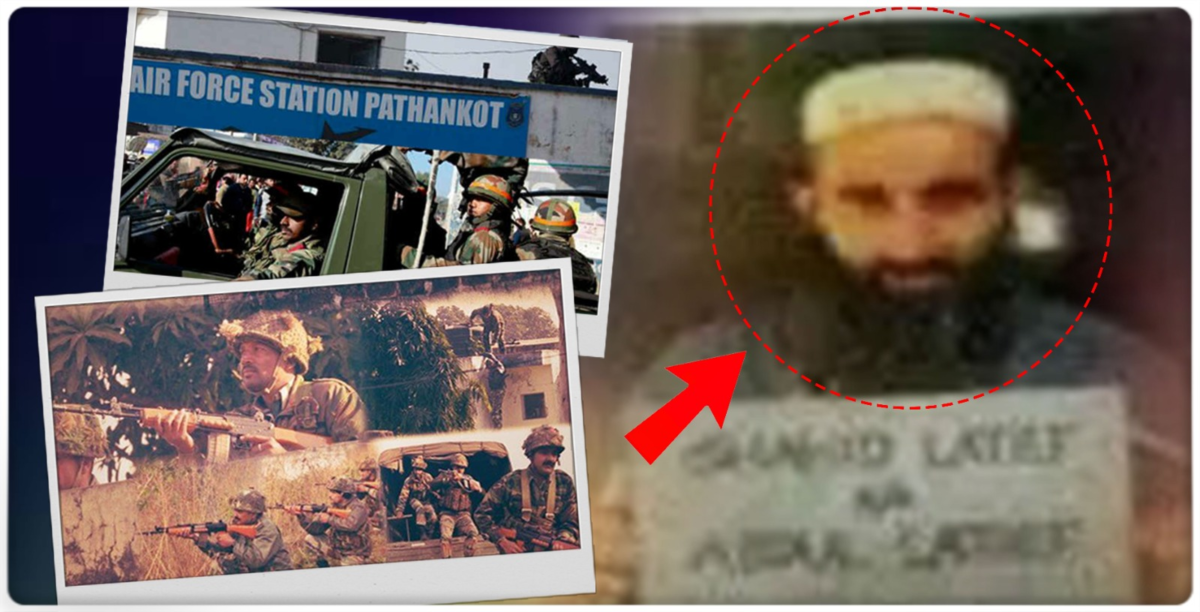In a shocking turn of events, Shahid Latif, the alleged mastermind behind the 2016 Pathankot attack, met his demise on Wednesday. Latif, a notorious figure wanted by India’s National Investigative Agency (NIA) in connection with the Unlawful Activities Prevention Act (UAPA) case, was shot dead by unidentified assailants in Pakistan’s Sialkot district. This incident has sent shockwaves through the region, reviving discussions about cross-border terrorism and the fragile India-Pakistan relations.

The Mastermind and his Sinister Legacy
Shahid Latif, also known as Bilal, was a senior leader of the Pakistan-backed terror outfit Jaish-e-Mohammed (JeM). He orchestrated the 2016 Pathankot terror attack, a gruesome incident that claimed the lives of seven Indian Air Force personnel.
The attack, perpetrated by JeM, led to heightened tensions between India and Pakistan, further complicating an already delicate relationship. Latif’s involvement with JeM highlights the nefarious activities of extremist groups.
The 2016 Pathankot attack orchestrated by him led to the loss of seven Indian Air Force personnel, leaving scars that remain fresh in the memories of many. His demise offers a glimmer of justice to the victims and their families, albeit a bitter one, reminding the world of the brutality of terrorism.

Latif’s Criminal Past and Nexus with Terrorism
Latif’s journey into terrorism traces back to 1993 when he infiltrated Kashmir as a member of the banned Hakar-ul-Ansar terror group. After a year-long arrest, he found himself imprisoned alongside Masood Azhar, a prominent terrorist, in the Kol Balwal jail in Jammu.
Azhar’s influence on Latif was evident, as he later resurfaced as a key member of JeM, following his release in a controversial hostage exchange involving IC-814 in 1999. Latif’s transformation from a mere cadre of a banned terror group to a key player in JeM underscores the complex web of terrorism in the region.
His association with Masood Azhar, the freed hijacker from the IC-814 incident, illuminates the interconnectedness of various extremist elements. Latif’s journey through prisons and across borders paints a grim picture of a man radicalized and relentless in his pursuit of violence.
The Assassination that Shook Sialkot
On that fateful day in Daska town, outside the Noor Madina Mosque, Latif and his brother, Haris Hashim, were mercilessly gunned down by three motorcycle-borne assailants. The incident occurred as Latif was leaving the mosque after prayers, leaving him and his brother dead on the spot.
This sudden act of violence has not only shocked the local community but also raised questions about the security situation in the region and the proliferation of extremist elements. The brazen attack outside the Noor Madina Mosque in Daska town showcased the audacity of the assailants.
The swift escape of the motorcycle-borne gunmen and the immediate cordoning off of the area by local law enforcement further underline the challenges faced in curbing such acts of terror. The incident has left the community in shock, raising concerns about the safety and security of the people living in the region.

A Grim Reminder of Lingering Tensions
Shahid Latif’s assassination serves as a somber reminder of the lingering tensions between India and Pakistan, exacerbated by the ominous presence of terrorist organizations. As both nations grapple with the aftermath of this event, there is a pressing need for open communication, cooperation, and intelligence sharing to dismantle these extremist networks.
The international community watches closely, hopeful that this tragic incident will prompt constructive dialogues, paving the way for a more secure and peaceful South Asian region.


